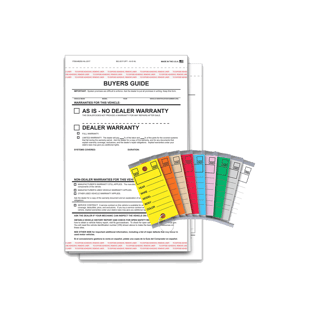Temporary Alternative Duty
Employers are responsible for providing Temporary Alternative Duty (TAD) for all employees injured on the job.
Purpose of TAD
- To build employees' strength and endurance, thereby, reducing the risk of reinjury.
- To provide true cost savings to NHADA's Workers' Compensation Trust.
- To prevent "disemployment" and other negative outcomes of Workers' Compensation by keeping the injured worker connected to the workplace.
Modified work needs to be established in accordance with the attending health-care provider's Workers' Compensation Medical Form as completed on each visit.
BECOME A MEMBER OF THE TRUST.
TAD Essentials
Temporary Alternative Duty is not only a statutory requirement, but it is an effective way to control workers’ compensation costs. By returning injured employees to work, it speeds up their recovery; therefore, requiring less medical treatment and returning them to their pre-injury position and earning potential sooner than requiring them to stay out of work. National studies have determined the longer and employee is out of work, the less likely they are to return.
All employers with 5 or more employees shall develop temporary alternative work opportunities for their injured employees. The Commissioner shall adopt rules under RSA 541-A relative to the administration of this section."
"Lab 504.04
Development of Temporary Alternative Work
a. All employers with five or more full-time employees shall develop temporary alternative work programs to bring injured employees back to work.
b. Temporary alternative work shall be limited and transitional in nature.
c. The employer shall advise employees that there is a written alternative work program in place and advise employees of the established procedures to obtain alternative work in the event of an on-the-job injury.
d. The employer shall develop an outline of each position that details present requirements and essential functions of each job within the organization at the time of injury if lost time or restrictions are involved.
e. The employer shall review each position outline in conjunction with its joint loss management committees as described in Lab 603. This review shall begin with those positions which experience the most workplace injuries. Together they shall develop and describe a policy or process that facilitates return to work.
f. The employer shall provide the treating physician with an appropriate outline of the present position with an essential task analysis as soon as possible after the injury occurs if lost time or restrictions are involved.
g. The employer and employee shall have the joint responsibility to obtain needed medical information that will enable the employee to gradually increase their duties to bring the employee back to their original position.
Preparedness is one key to a successful TAD program. Why recreate the wheel every time an employee returns to work with an alternate duty release? With some proactive steps, returning injured employees to work could be easier than you think.
- Members should have a written TAD Policy in place. You can find a sample TAD policy, here.
- Members should create a list of light-duty tasks that need to be performed. Your safety committee or even an injured employee with a TAD release can assist with this process. Examples of light-duty tasks can be found here.
- Front line supervisors should be trained that TAD is available and that any lost time from work is unacceptable if the injured employee has a work release. There are claims where disability cannot be avoided but return to work must be focused upon early to plan for return to work in a TAD position as soon as the injured employee is released.
- All employees must be notified that TAD is available for all employees with a work-related injury and should be presented with the written TAD Policy upon hire.
- All supervisors should remind the injured employee that TAD is available before they seek medical treatment. They should also remind the employee to return with a N.H. Workers’ Compensation Medical Form.
- Injuries should be reported to our Nurse Case Manager, Marta Silakka, before the employee seeks medical attention. She can be reached at 800-852-3372. Marta will assist with an in-network referral and remind the employee of the importance of obtaining the N.H. Workers’ Compensation Medical Form.
- After seeking medical attention, the injured employee must return the N.H. Workers’ Compensation Medical Form to their employer. The employer should go over the restrictions outlined on the form with the injured employee and create TAD position with the previously created list of light duty tasks. The TAD position does not have to be in the same department as the injured employee’s regular position.
- If the injured employee does not return to work after medical treatment, call them at home. Be sympathetic, check on their well-being, offer assistance, remind them of the availability of TAD, and determine their return to work plan.
- The supervisor should monitor the TAD closely to assure that the injured employee isn’t doing too much or too little.
- Occasionally, the treating provider requires more detail regarding the light-duty tasks that are available to the injured employee. If that’s the case, you might be asked to complete a Job Task Analysis Form.






